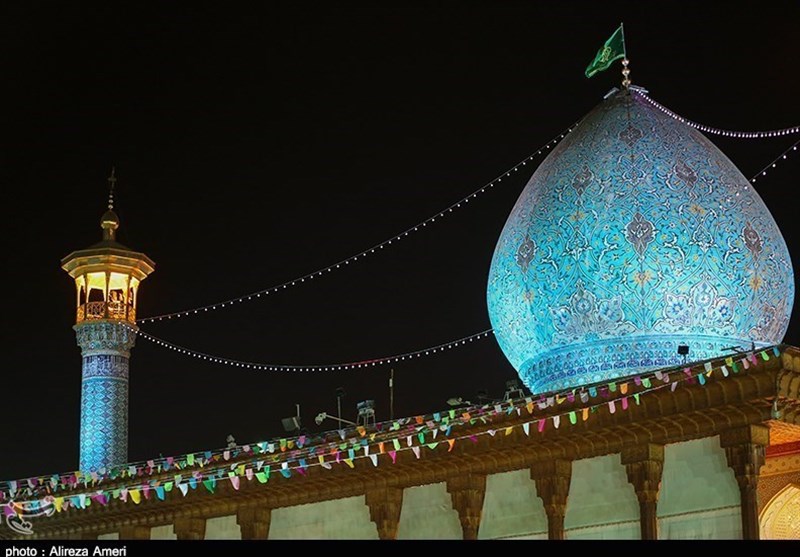Shah Cheragh: The Most Important Pilgrimage Centre of Iran's Shiraz
TEHRAN (Tasnim) - The most important pilgrimage center of Shiraz, in the Iranian southern province of Fars, is the Mausoleum of Mir Seyyed Ahmad, the son of the seventh Shiite Imam known as Shah Cheragh (the Shrine of the lord of the light).
Mir Seyyed Ahmad (AS) came to Shiraz at the beginning of the ninth century CE, and laid to rest there. After the shrines of Imam Reza (AS) in Iran's northeastern city of Mashhad, Khorasan Razavi province, and shrine of Hazrat Masoumeh (SA), sister of Imam Reza (AS) in Qom, the third most venerated pilgrimage destination in Iran is Shrine of Shah Cheragh in Shiraz, irangazette.com reported.
Archeological excavation indicates a settlement on the site of Shiraz in prehistoric period and cuneiform records from the great ceremonial capital of Persepolis, 57 kilometers to the north, showing that it was a significant town in Achaemenid times. As a city, it was founded in 684 CE, after Arab armies conquered the Sassanid army.
Al-e Bouyeh rulers (945-1055 CE) made Shiraz their capital — building mosques, palaces and a great city wall. The 13th and 14th centuries saw Shiraz as a literary center especially famous for its poets Sa'di and Hafez, both of whom are buried in the city. There are many splendid Islamic monuments in Shiraz, especially its enormous Safavid mosque, but the most notable religious site is Shrine of Seyyed Amir Ahmad (also called Ahmad ibn Musa).
Amir Ahmad and his brother Mir Mohammad ― both of whom brothers of Imam Reza (AS) ― took refuge in Shiraz following Abbasid persecution of the Shiite sect (Amir Ahmad died or was murdered in 835 CE). The brothers' tombs, originally only simple mausoleums, became celebrated pilgrimage destinations in the 14th century CE when the pious and art-loving Queen Tashi Khatun erected a mosque and theological school by the tombs.
Known locally as Shah Cheragh or the 'King of Light', the exquisite tomb of Amir Ahmad is a place of truly stunning beauty. The enormous dome above the shrine is inlaid with hundreds of thousands of pieces of finely crafted tile and the interior walls are likewise covered with myriad pieces of dazzling cut glass intermixed with multi-colored tiles. Mausoleum of Mir Mohammad is in the same complex.
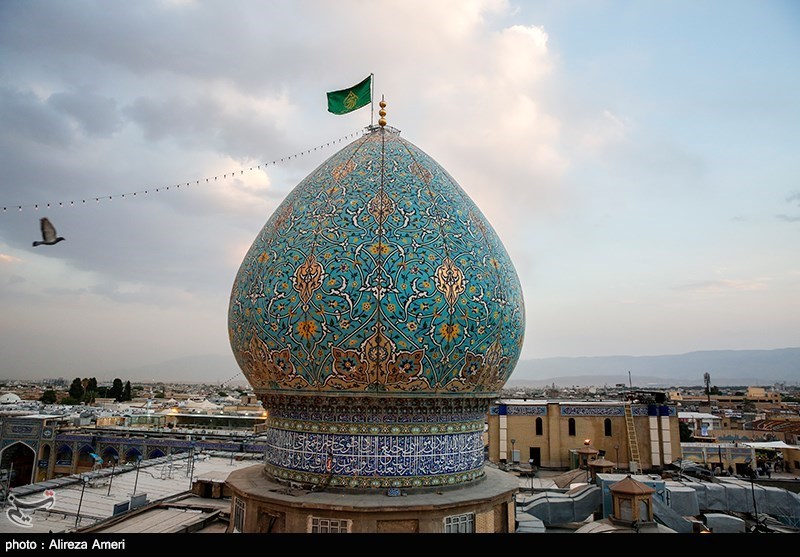
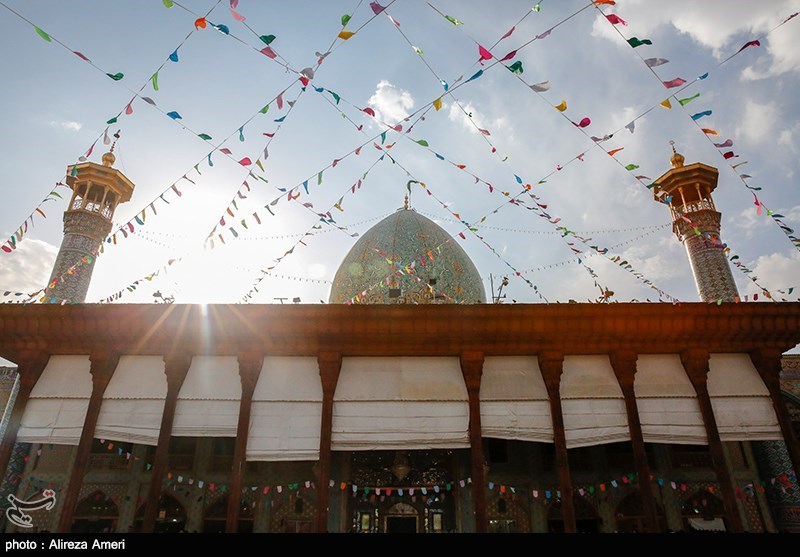
The site is the most important place of pilgrimage within the city of Shiraz. During the rule of Atabak Abubakr Sa'd bin Zangi (1130 CE) of Zangid dynasty, the chief minister to the monarch by the name of Amir Muqarrabeddin Badreddin built the tomb chamber, the dome, as well as a colonnaded porch.
The mosque remained this way for roughly 200 years before further work was initiated by Tashi Khatun (the mother of Inju king, Abu Es'haq) during the years 1344-1349 CE. She carried out essential repairs, constructed an edifice, a hall of audience, a fine college, and a tomb for herself on the southern side.
She also presented a unique 30-volume Qur'an, written in golden Sols characters with gold decoration, in the style of the calligraphist of that period, Yahya Jamali. The date written on the Qur'an indicates that it was written during 1344-1345 CE. The buildings set up by Queen Tashi Khatun have not remained, but the volumes of Qur'an have remained and are preserved in Pars Museum.
The mosque again underwent necessary repairs under the reign of Safavid king, Shah Ismaeil I, in 1506 CE. The repairs were initiated by the guardian of the mosque at the time, Mirza Habibollah Sharifi. The mosque was again repaired in 1588 CE when half of the structure collapsed as a result of an earthquake. During the 19th century, the mosque was damaged several times and was subsequently repaired. Qajar king, Fathali Shah, presented an ornamental railing for the tomb in 1827.
Another earthquake shook the mosque in 1852, and repairs were carried out by Mohammad Nasser Zahiroddoleh — one of Qajar figures.
Finally, Mirza Hassan Ali Nasir-ol-Molk, one of the rulers of Qajar dynasty, repaired the dome, but on account of the numerous cracks, the whole dome was removed in 1958, and an iron structure, which was lighter and likely to last longer, was made in the shape of the original dome and put in its place at the cost of the people of Shiraz.
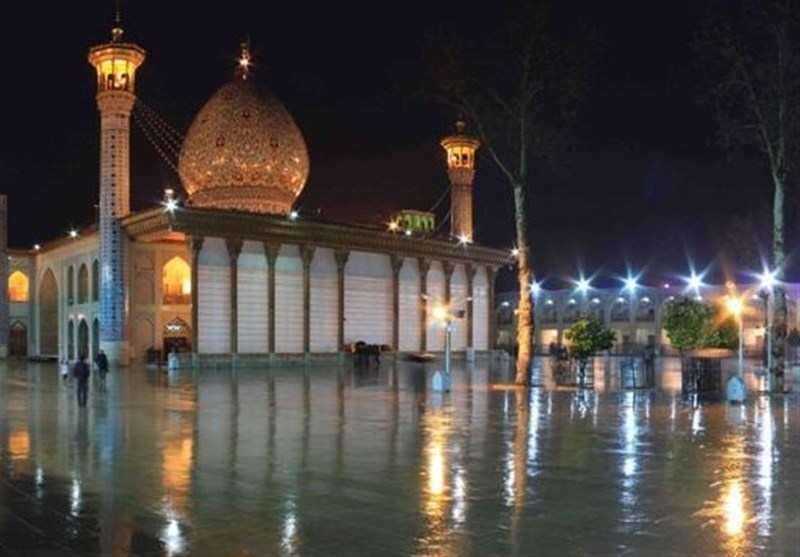
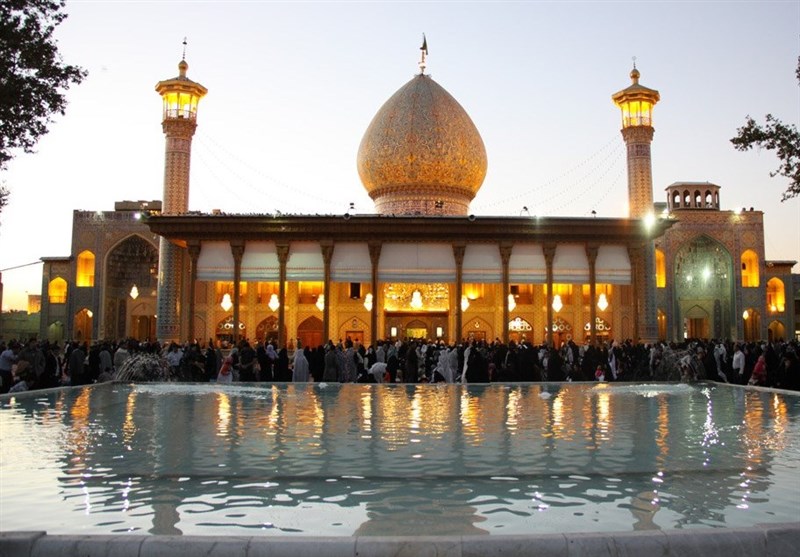
The present building consists of the original portico, with its 10 columns, on the eastern side, a spacious sanctuary with lofty alcoves on four sides, a mosque on the western side of the sanctuary, and various rooms. There are also numerous tombs contiguous to the mausoleum.
The decorative work in a mosaic of mirror glass, the inscriptions in stucco, the ornamentation, the doors covered with panels of silver, the portico, and the wide courtyard are most attractive.
The tomb, with its latticed railing, is in an alcove between the space beneath the dome and the mosque. Two short minarets, situated at each end of the columned portico, add impressiveness to the mausoleum, and to the spacious courtyard, which surrounds it on three sides.
Shah Cheragh Mausoleum was registered as No. 363 on the National Heritage List in 1939.
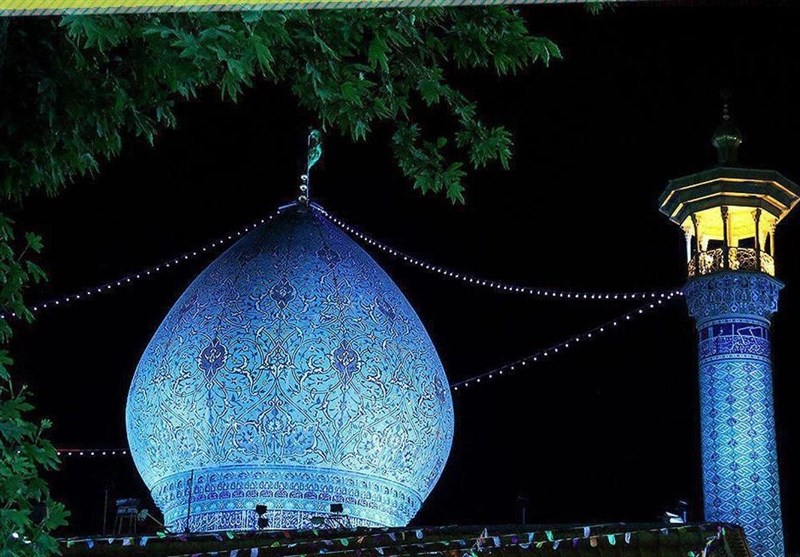
Source: Iran-Daily
